Last updated on July 21st, 2023
The moment the bicycle was invented, it took the world by storm. From the first velocipede that made its users shake with their iron and wood wheels to the penny-farthing that got its name from the similarity of its two mismatched wheels to a penny next to a farthing, these ingenious contraptions have carried many far and wide. And as times have changed, so have bicycles – starting with wooden wheels and moving on to the first inflatable rubber tire. Modern times have even brought us electric bikes and bicycles that can fold into the size of a not-too-large suitcase.
Here are 138 interesting facts about bicycles and cycling
1. The very first bicycle was invented in 1817 by a man named Karl von Drais from Germany. This bike was the first two-wheeled, steerable contraption, and though it went by many names the most popular was the aptly applied nicknamed the “hobby horse”.[1]
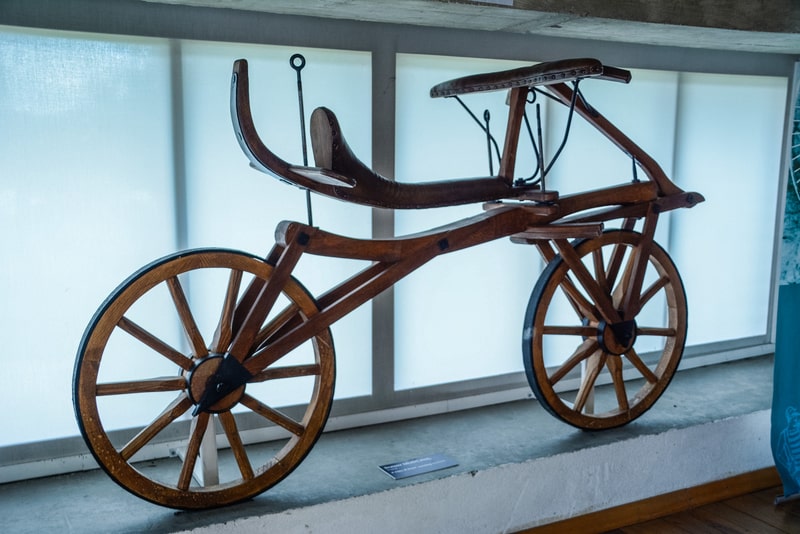
2. In 1885, an Englishman named John Kemp Starley invented a “safety bike,” which is similar to the modern bicycle as we know it. It had 2 wheels of the same size and a chain drive to propel the bike forward. Funny enough, the basic design of the bicycle hasn’t really changed over the last 100 years.[2]
3. The safety bicycle had wheels with spokes that were around 30 inches in diameter.[3]
4. In the Netherlands, cycling is one of the most popular modes of transport – over 30% of all trips are taken by bicycle.[4]
5. Fred A. Birchmore was the first person to cycle around the world. In 1935 he traveled around 40,000 miles, 25,000 of which were on a bike. He traveled through Europe, Asia, and the USA.[5]
6. Bicycles have become very popular, and there are 100 million bicycles manufactured across the globe each year.[6]
7. There are roughly 2 billion bikes in use around the world – that means around 1 in every 3 people has a bicycle.[7]
8. The Tour de France is arguably the most well-known bicycle race in the world, but it started from humble beginnings. Only 60 cyclists competed in the first Tour de France, and only 21 of them managed to finish the grueling course.[8]
9. The Tour de France is not for the faint of heart and is a testament to what the human body is truly capable of. The course is 3,360 miles and is raced over a painful 21 days.[9]
10. In the Summer Olympic Games held in Beijing, China, in 2008, they introduced a new cycling event. BMX (Bicycle MotoCross, which is an extreme style of cycling, became part of the roster of events.[10]
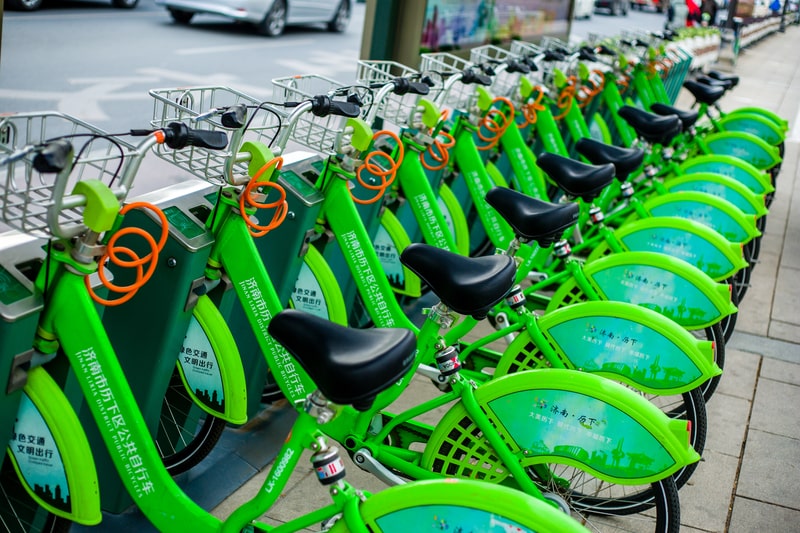
11. Though there are bicycle manufacturers in many parts of the world, the top 3 manufacturers of bicycles and bicycle parts are China, India, and Taiwan.[11]
12. 24-year-old Annie Londonderry was the first woman that cycled around the world. It took her almost a year, and she received a $10,000 prize.[12]
13. In September 2013, a German man named Jens Stotzner cycled 78 laps of an 86 m (6,708 m) course underwater. The course was marked at the bottom of a swimming pool.[13]
14. Copenhagen is Denmark’s capital city and was named the most bicycle-friendly city in June 2019.[14]
15. The world’s largest bicycle weighs 150 kg and was built by Didi Senft from Germany. The bicycle’s wheel diameter is 3.3 m. It’s 7.8 m long and 3.7 m high.[15]
16. In 2019 Sergey Dashevsky rode the smallest bicycle ever made. The mini-bike is only 8.4 cm long.[16]
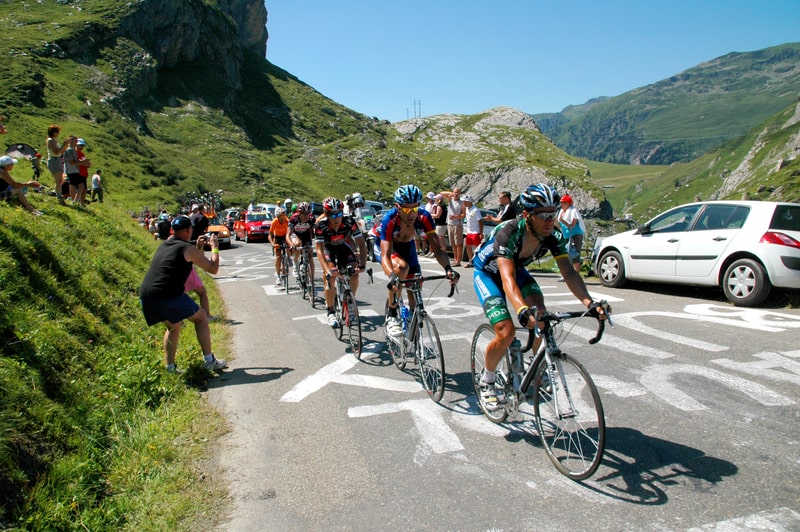
17. The Tour de France is probably the most well-known bicycle race in the world. It was established in 1903, and many people think that out of all the sports, it is the toughest test of a person’s endurance.[17]
18. The world’s most expensive bicycle costs over $500,000 and is called the Trek Butterfly Madone. It was an artwork done by Damien Hirst that used a bicycle as part of the piece.[18]
19. A half billion (500,000,000) people in China use bicycles to travel.[19]
20. Denise Mueller-Korenek achieved an incredible speed of 183.9 mph on a bicycle. This set the record for the fastest female in a slipstream.[20]
21. The first tandem bicycle (two-seater bicycle) was manufactured in 1896 by Pope Mfg. Co. It was called a Model 43 Columbia and cost the couple $150.[21]
22. Although the tandem bicycle’s wheels had the same diameter, the number of spokes differed. The diameter of the tires was 28 inches, but while the front wheel had 36 spokes, the back tire had 44.[22]

23. According to the UCI ranking for 2023, the best male cyclist in the world is Tadej Pogačar from Slovenia, who cycles for UAE Team Emirates, with 6727.86 points.[23]
24. Demi Vollering is the 2023 UCI’s best female cyclist. She is from the Netherlands and cycles for Team SD Worx.[24]
25. Jacques Anquetil has won the Tour de France a total of 5 times, making him the current record holder.[25]
26. As the world is becoming more environmentally conscious and concerned about the effects of our modes of transportation on a global scale. The bicycle is more efficient than 100% of other means of transportation, even walking.[73]
27. With a gradient of 35% the world’s steepest street for a cyclist is Baldwin Street. This street in Dunedin, New Zealand, is even featured in the Guinness World Records.[74]
28. Across the world nation’s are encouraging their citizens to be more aware of sustainability and in 2020, India followed suit. The “Cycles4Change Challenge” was launched in an attempt to promote cycling as a sustainable mode of transportation in cities.[75]
29. The world’s longest continuous bicycle path is the EuroVelo 6, spanning over 3,600 kilometers and connecting the Atlantic Ocean to the Black Sea.[76]
30. The bicycle is a symbol of women’s rights and empowerment. In 1896, Susan B. Anthony famously said, “Let me tell you what I think of bicycling. I think it has done more to emancipate women than anything else in the world.”[77]

31. Lance Armstrong was the only person to win the Tour de France 7 times, but he was stripped of his titles after a doping controversy.[26]
32. The world’s longest two-seater bicycle (tandem bicycle) is 20 meters long and has 35 seats, and although it isn’t strictly a two-seater bicycle anymore, the 35-seater was never given its own name.[27]
33. With the world’s population growing at a massive speed, the need to be aware of space-saving technology has become very important. Luckily, you could fit 12 bicycles in the space you need to park one car, and perhaps the bicycle is the answer in densely populated cities.[28]
34. In the Netherlands, a total of 17.6 billion km are traveled by bicycle each year.[39]
35. Over the years, the health benefits of regular cycling have been confirmed and widely publicized. It has been proven that cycling reduces the risk of heart disease by 50%. So, whether it is a stationary bicycle in a gymnasium or a road bike, it is one of the best forms of exercise.[40]
36. As cycling becomes more and more popular there are more and more people developing their cycling skills and working on the tricks that they can perform. The world’s longest wheelie on a bicycle lasted over 22 miles and was achieved by Manuel Scheidegger in 2014.[41]

37. Mountain bikes, which are the most popular bicycles in the modern world, were invented in the 1970s. They were invented for off-road purposes and are a stronger and more durable version of the bikes that previously existed.[29]
38. The Union Cycliste Internationale set the standard for safety in the bicycle industry. They have set a minimum weight for professional cyclists; their bikes are not allowed to be less than 15 lb.[30]
39. Though it is only a bike race, and people sometimes assume that bicycles can be slow, the average speed of the Tour de France is around 25 miles per hour.[31]
40. The Brompton Bike is a 2-seater bicycle that can fold up into a briefcase. It consists of 2,100 different parts.[32]
41. The world’s oldest cycling club was founded in England in 1868. And not only is the Pickwick Club the oldest cycle club, but it is also the oldest Dickensian Association.[33]
42. The Brompton bike – called the “Swiss Army knife of bikes,” is shipped to 47 different countries worldwide, making it the most popular folding bicycle of modern times.[34]
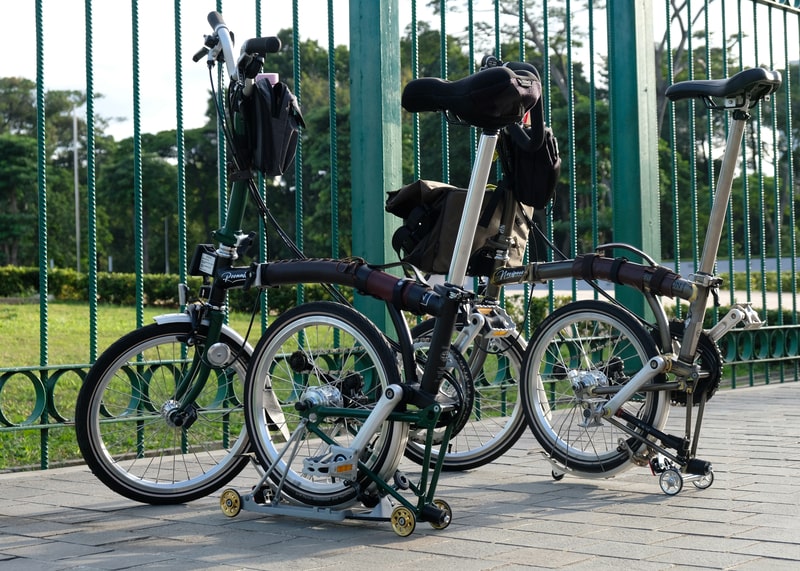
43. Though the Brompton Bike is quite popular, it is also quite costly. It costs between $800 and $3500 for this portable bicycle, but since it can conveniently fold up into the size of a suitcase, it remains well used.[35]
44. With the advances in technology touching every part of human life, it is understandable that bicycles felt the effect too. Electric bicycles, or e-bikes, are bicycles that are powered by electric motors and became popular in the 1990s.[36]
45. Many studies and a lot of research have been done on the safety of bicycles. These two-wheeled machines offer no protection to users and are considered quite dangerous. Wearing a helmet can reduce the risk of head injury by up to 85%, and most countries across the world have made a helmet a compulsory accessory for any cyclist.[37]
46. Because electronic bikes are run with a motor it follows that they are quite a bit faster than their manually pedaled counterparts. The e-bike can reach top speeds of up to 45km/h (28mph).[38]
47. Each year the number of contestants in the Tour de France increases as more hopeful participants travel to the European continent to put themself to the test. This bicycle race now has around 200 cyclists each year.[42]
48. Because the Tour de France is a 21 day race, the cyclist needs an immense amount of energy and strength to compete. During the Tour de France, an average cyclist can burn over 6,000 calories daily. That means they have to constantly consume glucose supplements and energy drinks to keep their stamina up.[43]
49. The Tour de France does not follow the same route every year, it varies between going in a clockwise and counterclockwise circuit across the country. Due to this, the finishing times can differ, and the fastest Tour de France took place in 2005 at an average speed of 25.88 mph.[44]
50. In 1919 the Tour de France finished with an average speed of 15.68 mph, making it the slowest on record.[45]
51. Though the route of the Tour de France changes each year and the lengths of the stages change there are always 21 stages. The longest stage in Tour de France history was 268 miles in 1926.[46]
52. Cycling can reduce annual CO2 emissions by more than 9,000 metric tons in cities with bicycle-sharing programs.[47]
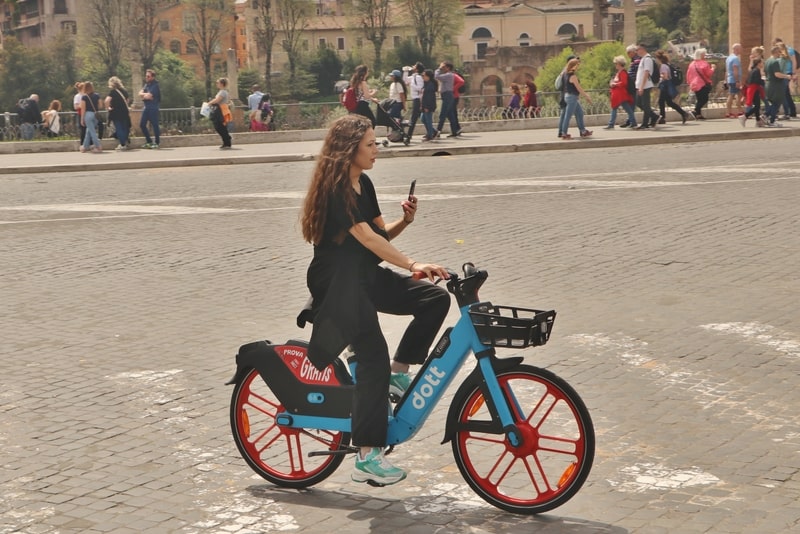
53. The world’s e-bike market was worth $14,755 million in 2018, with an expected annual growth of 6.39% between 2019-2024.[48]
54. Between 2019 and 2020, the amount of money spent on bicycles and accessories grew from $6 billion to $8.2 billion.[49]
55. The bicycle is much more popular with men than it is with women in the US. Of all the bicycle trips taken, only 24% are by women.[50]
56. Type 2 diabetes has become a global pandemic, with large numbers of people suffering from the deadly disease. In a study conducted in Finland, people who cycled for more than 30 minutes per day had a 40% lower risk of developing type 2 diabetes.[51]
57. Eddy Merckx, a Belgian cyclist, is considered one of the greatest cyclists of all time, with 525 career wins. He will go down in the history books as a man that truly mastered the fine art of cycling.[52]
58. Though the Tour de France is the most famous 21-stage bicycle race in the world there are two others that can stand shoulder-to-shoulder with the great race. One of these is the Giro d’Italia held annually in Italy.[53]

59. As with all other sports, records are kept with regard to various aspects of the sport. One of these is the further a male cyclist could travel in an hour. The current men’s Hour Record holder is Victor Campenaerts, who covered 55.089 km in April 2019.[54]
60. On the other side of the gender spectrum, we have Vittoria Bussi, who is the current women’s Hour Record holder. She covered 48.007 km in September 2018.[55]
61. Crime has not ignored the humble bicycle, and across the world, cyclists are encouraged to lock up their bikes securely. In the UK, 400,000 bikes are stolen each year, which is approximately 1,100 bikes per day.[59]
62. The United States of America is a vast nation with millions of people owning bikes, but despite this only 0.5% (500,000) of the bicycles manufactured each year are manufactured in the U.S.[60]
63. As the popularity of the bicycle grows and as more countries encourage the use of bicycles as a more environmentally friendly means of transport, so do the sales numbers increase. In 2022, the global bicycle market was valued at $64.62 billion, and it is projected to reach $75.39 billion by 2027.[61]

64. The fastest time trial in Tour de France history was recorded by Rohan Dennis in 2015, with an average speed of 55.446 km/h.[56]
65. Jeff Peeters from Belgium built the world’s heaviest rideable bike. The bicycle weighed a whopping 860 kg but lived up to its name and is a fully functional and rideable bicycle. Though the user will need considerable strength to keep it from toppling over.[57]
66. In December 2012, Jamie Oliver, from the UK, broke the record for the longest time spent on a static bike. He completed a total of 268 hours, 32 minutes, and 44 seconds on the bicycle.[58]
67. The world record for the longest bicycle was set in 2020 in Australia by a man named Bernie Ryan. The bicycle was measured at 47.5 m (155 ft 8 in) long.[62]
68. Jon Ornee recorded the fastest century ride (100 miles) on a bicycle (while drafting behind a vehicle) in October 2020. He completed the 100 miles in a time of 2 hours, 20 minutes and 46 seconds. Though this is not yet a certified world record, and the category has not been recognized, Jon has been applying to have the category added.[63]
69. The bicycle was instrumental in the women’s suffrage movement. In the late 19th and early 20th centuries, bicycles gave women newfound mobility and independence.[64]
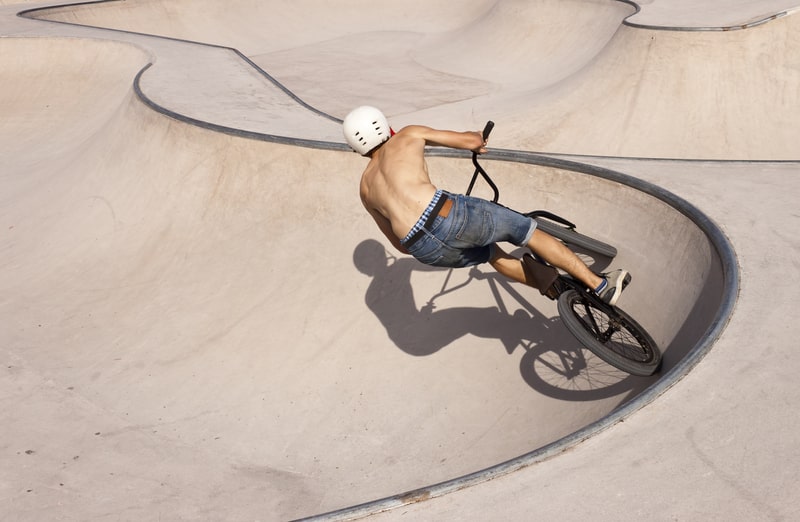
70. The BMX scene started off on dirt tracks in southern California in the 60s and 70s. The sport quickly grew in popularity. In 1974, George E. Esser set up the non-profit BMX National Bicycle League in Florida.[65]
71. In 1977, The American Bicycle Associate (ABA) became the national body for BMX and played an instrumental role in the organization of the sport. The International BMX Federation was founded in 1981, and the first world championships were held in 1982.[66]
72. Since the 1800s, the bicycle has been used to help fight wars. Because the bicycles were quieter than horses and far easier to maintain – no need for food or water – they were very popular.[126]
73. The National World War I Museum houses a stunning collection of more than 160 photographs of military bicycles that were used by the bicycle battalions during that war. [127]
74. World War II proved again that bicycles were an indispensable tool for soldiers, and from 1939-1945 there were countless men marching across Europe with French folding bicycles on their backs.[128]
. . . continue reading on the next page
